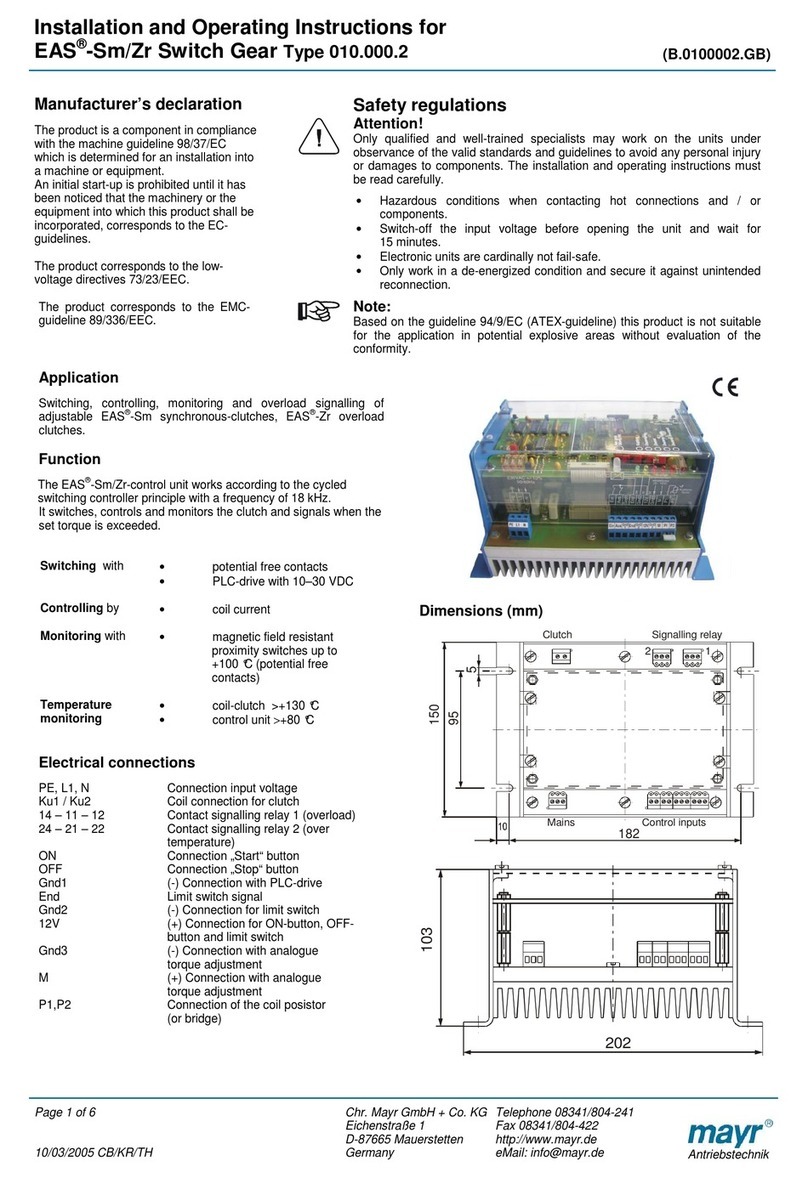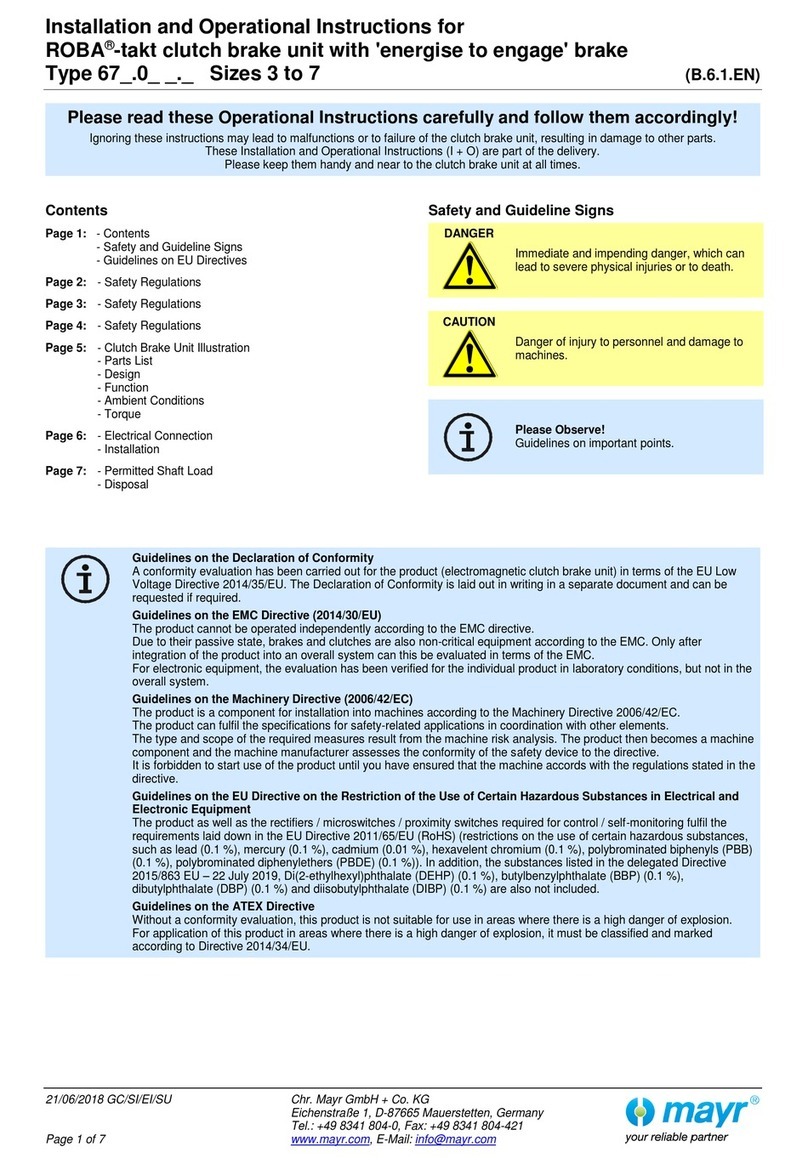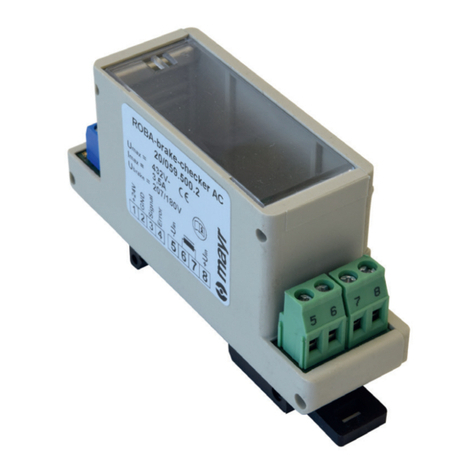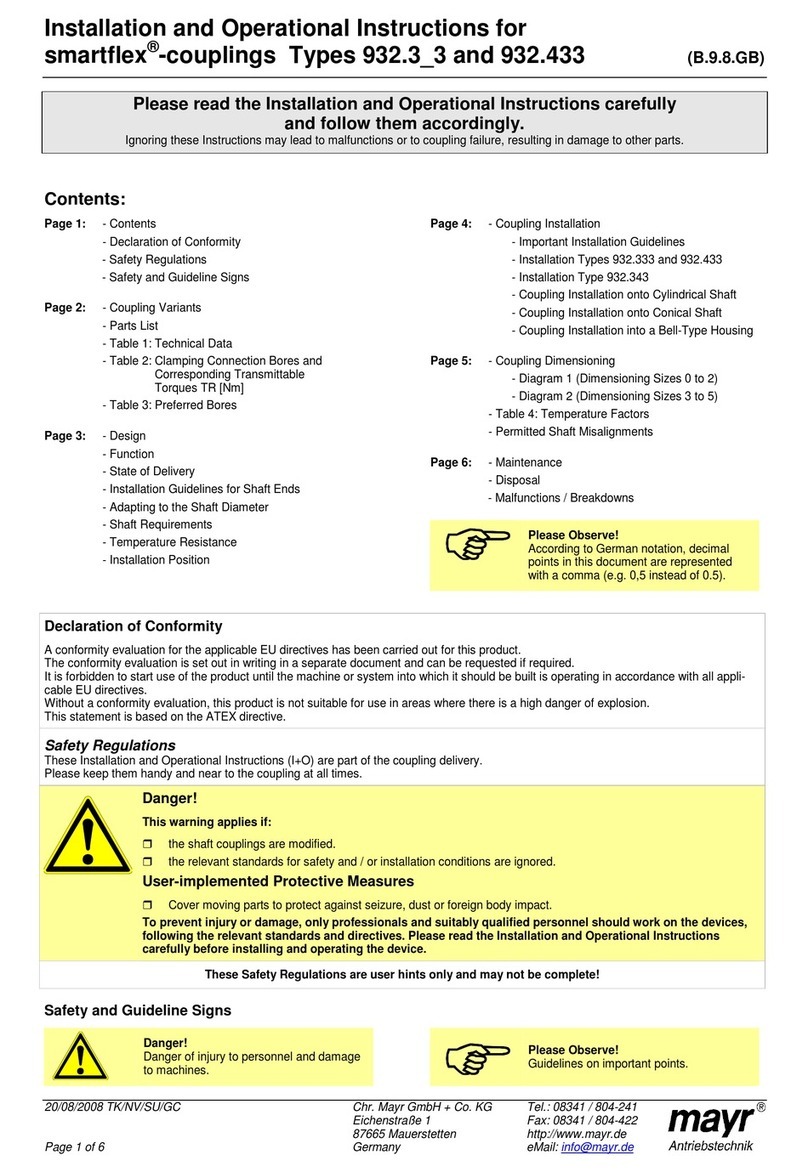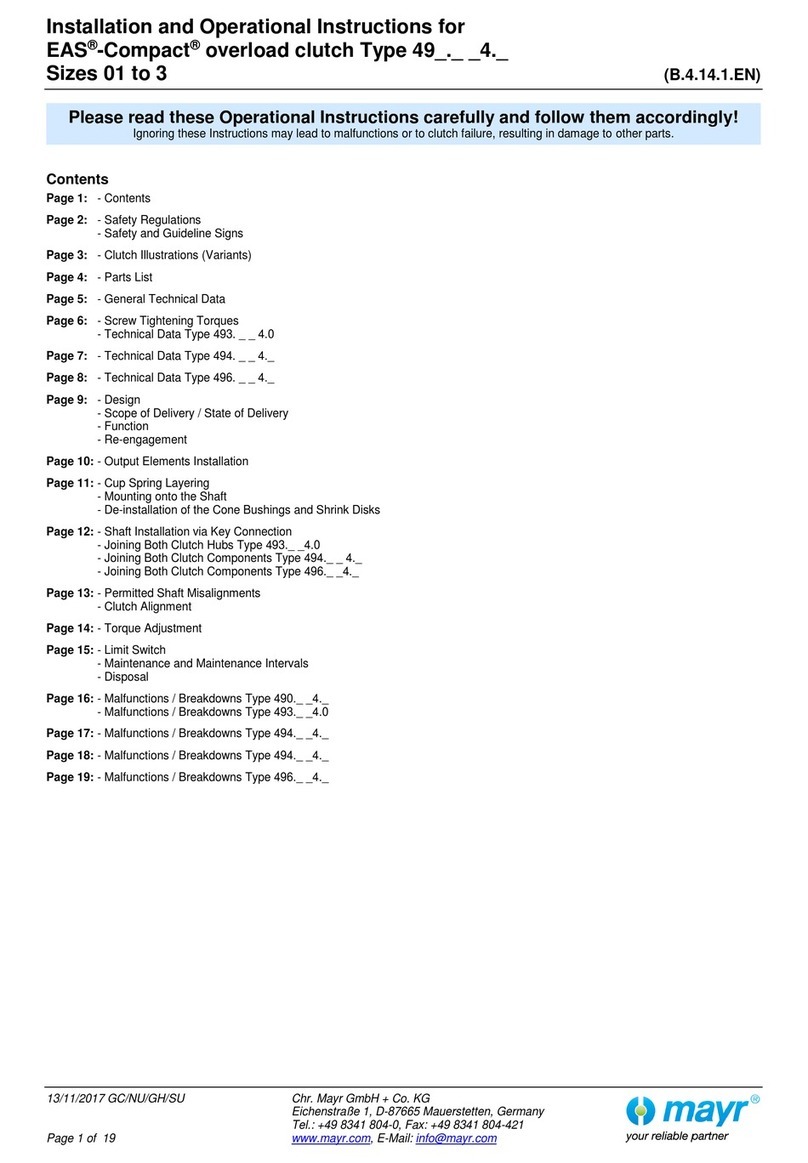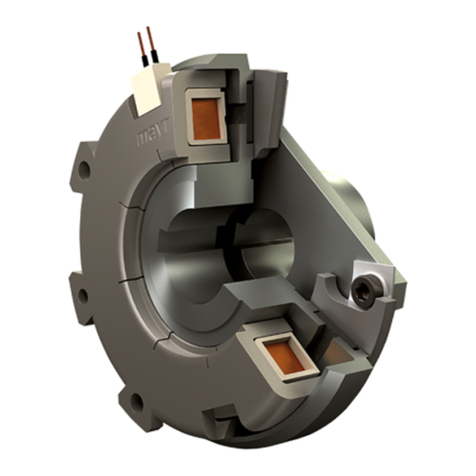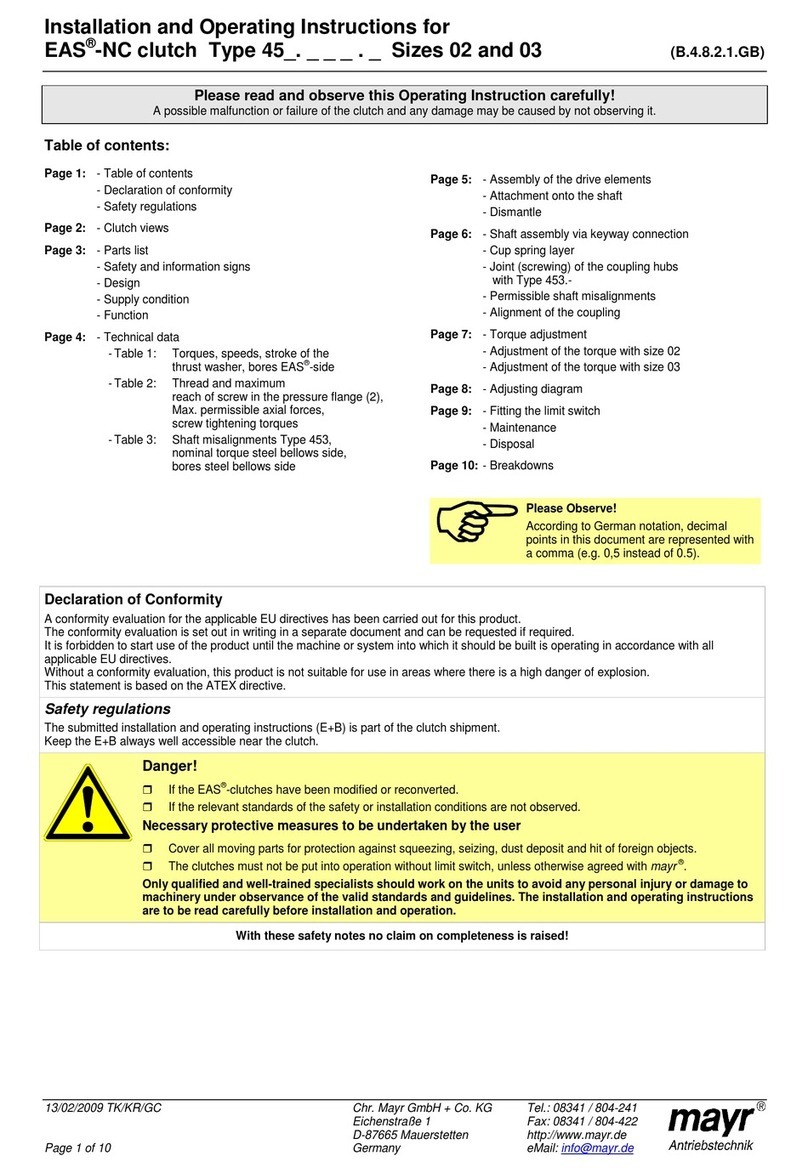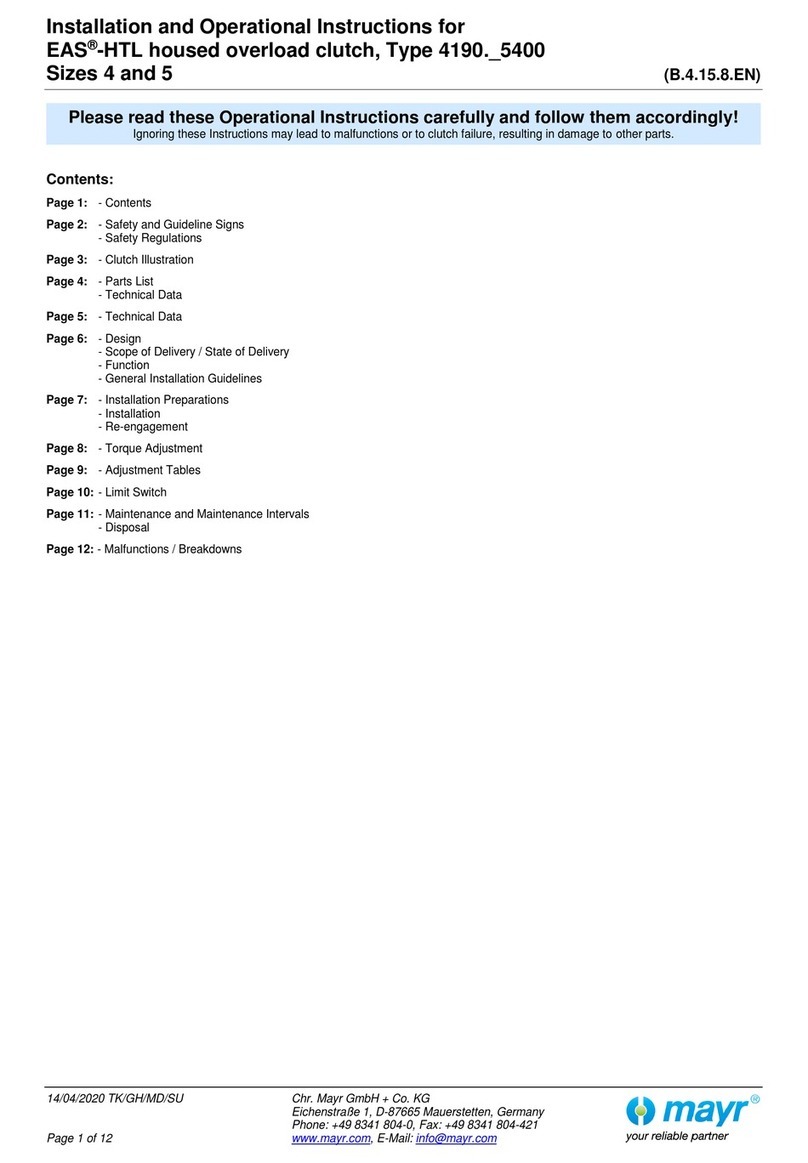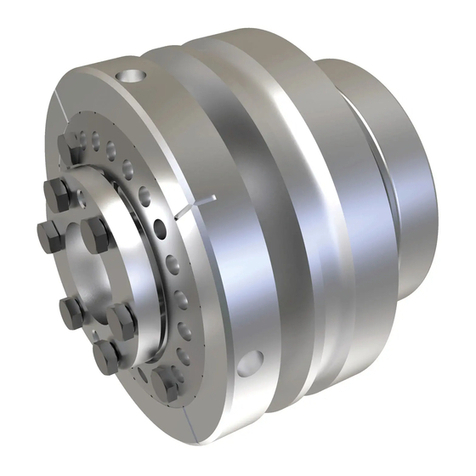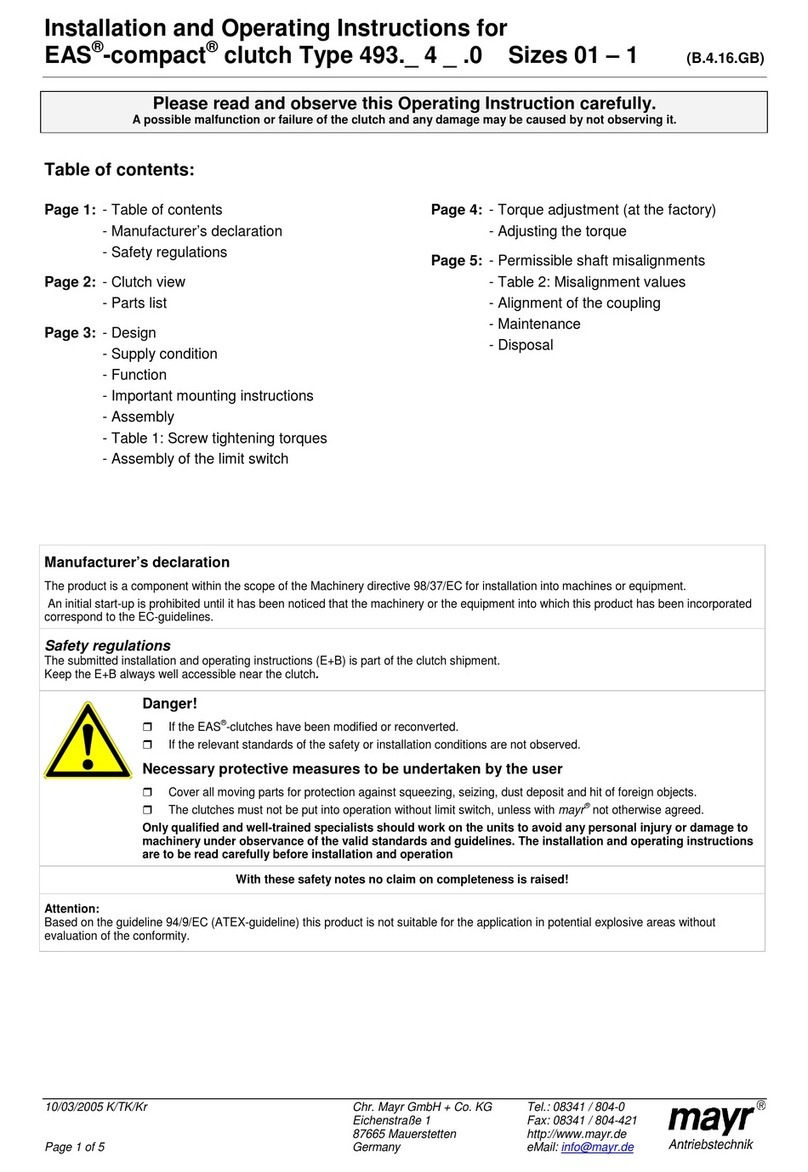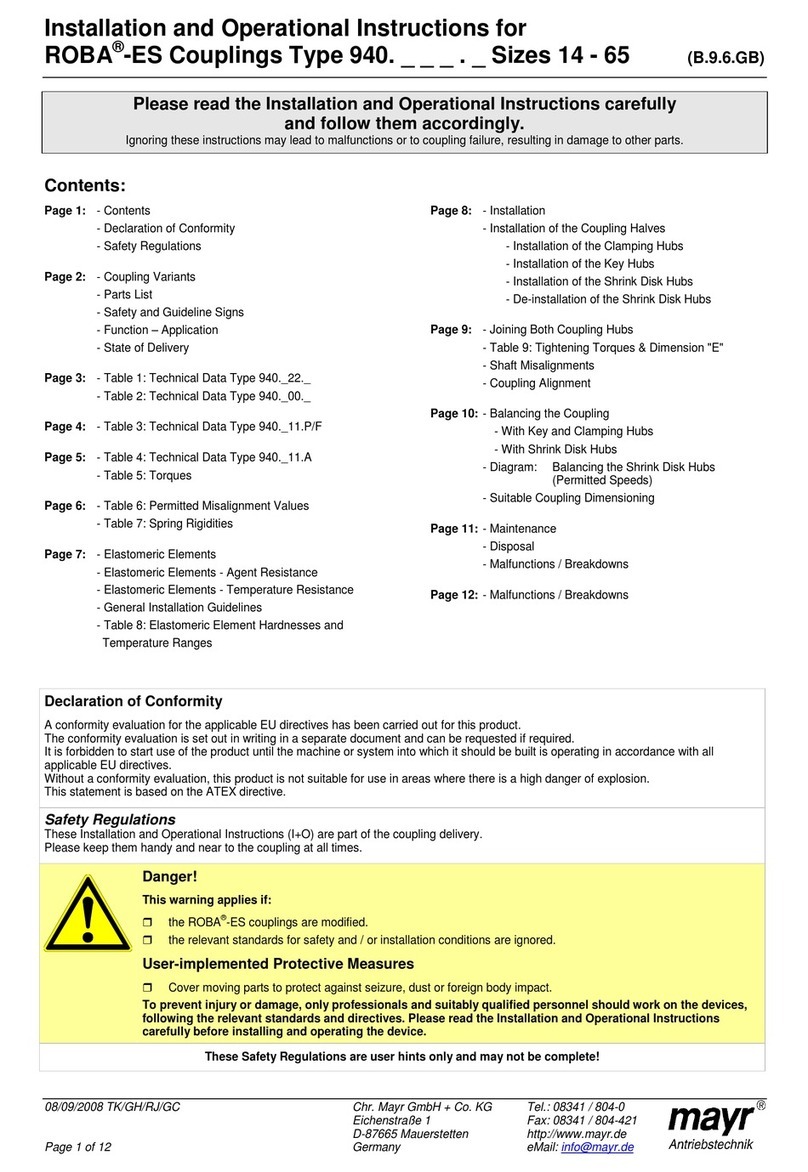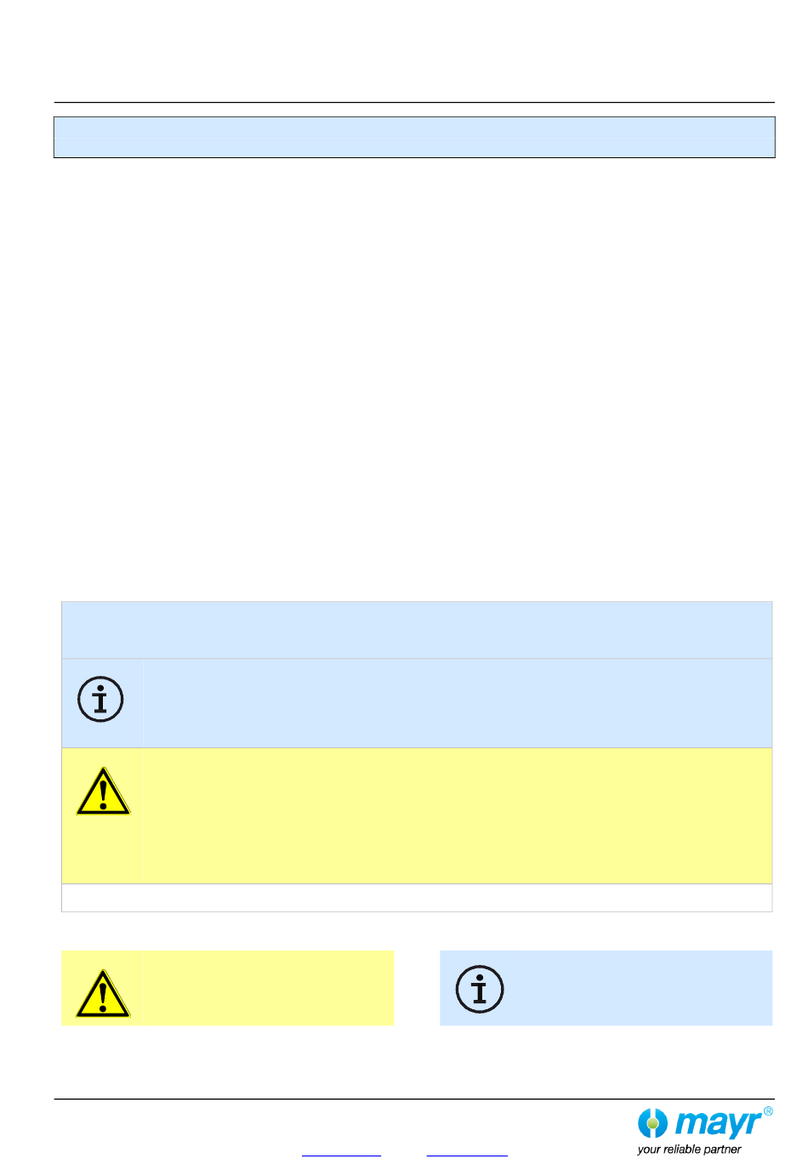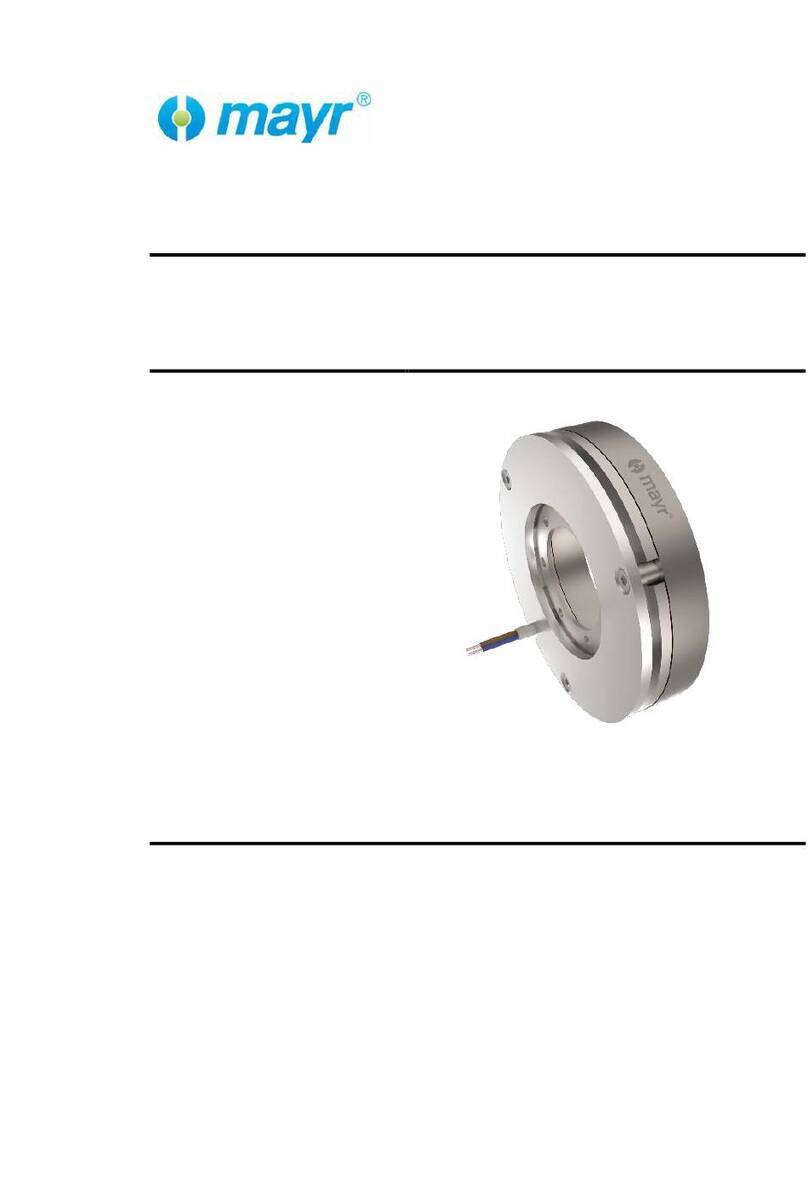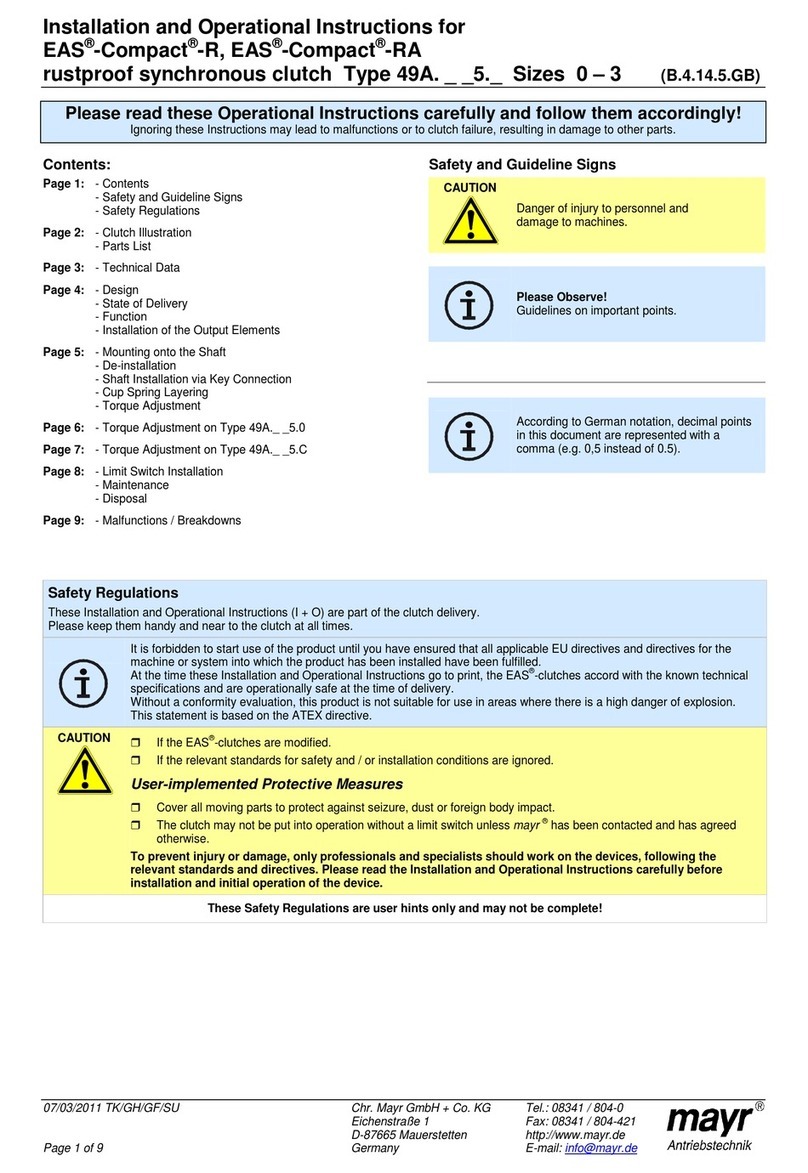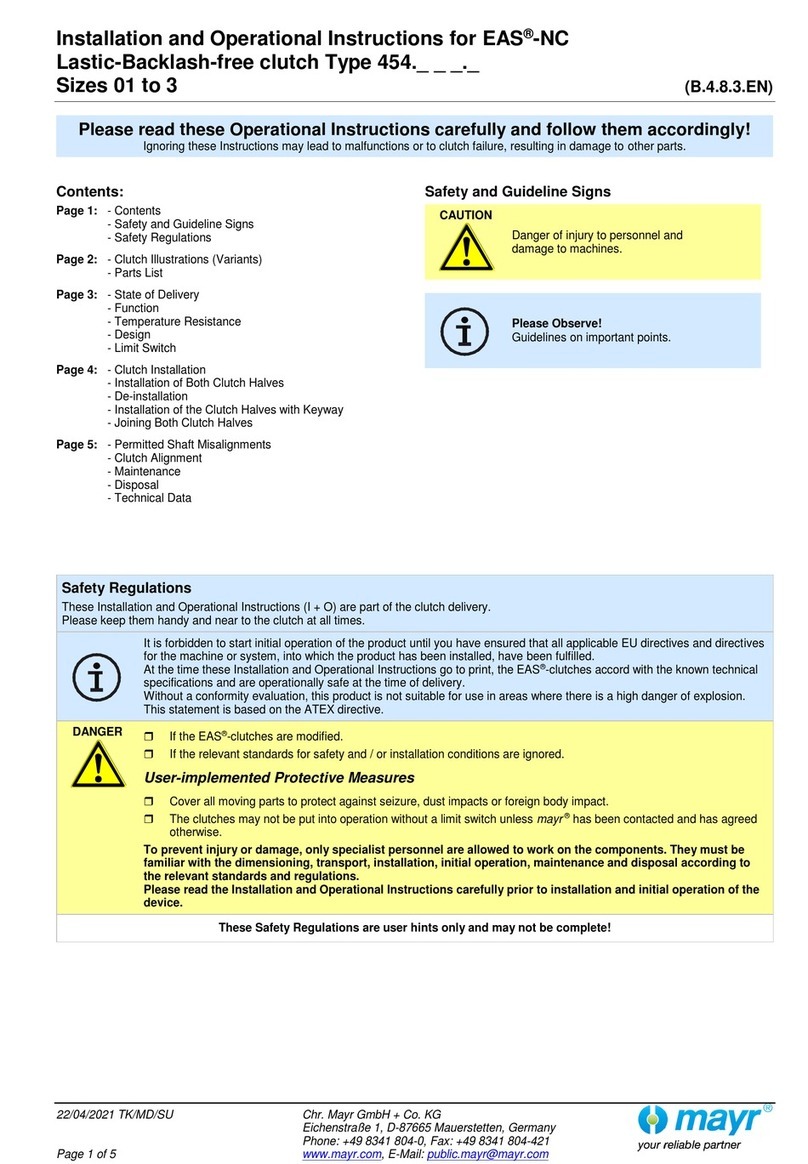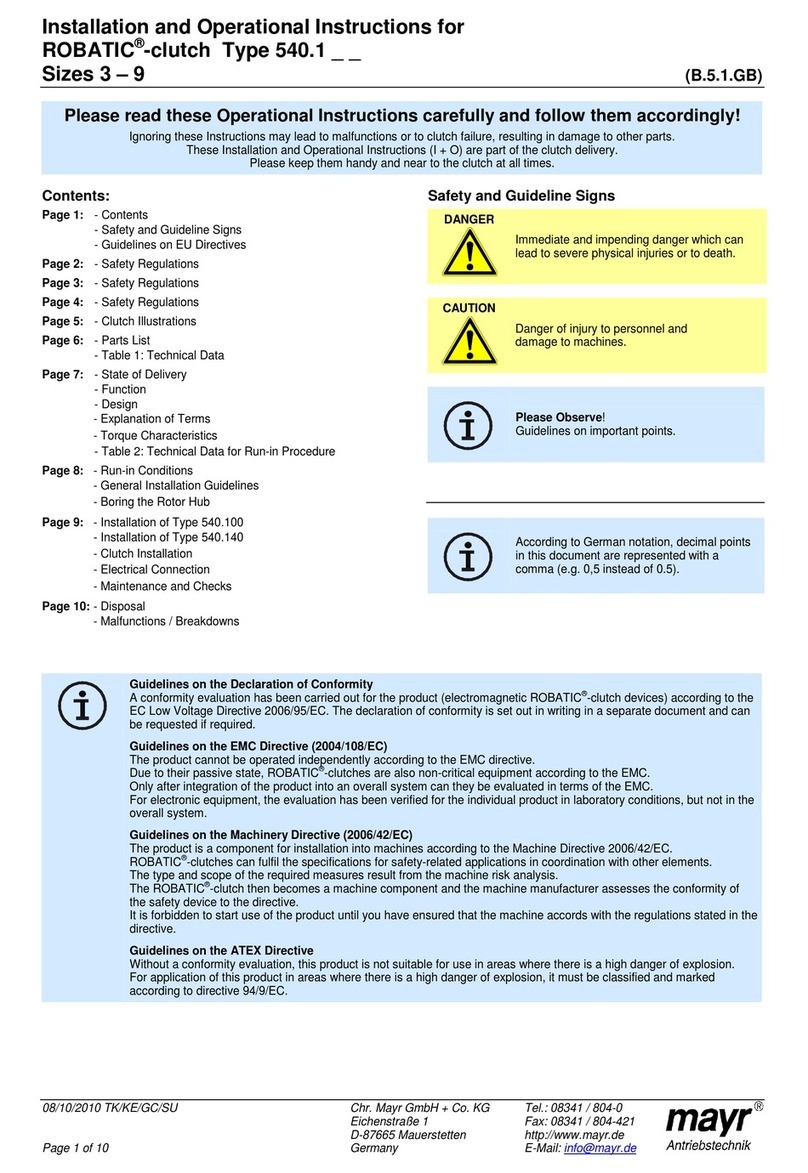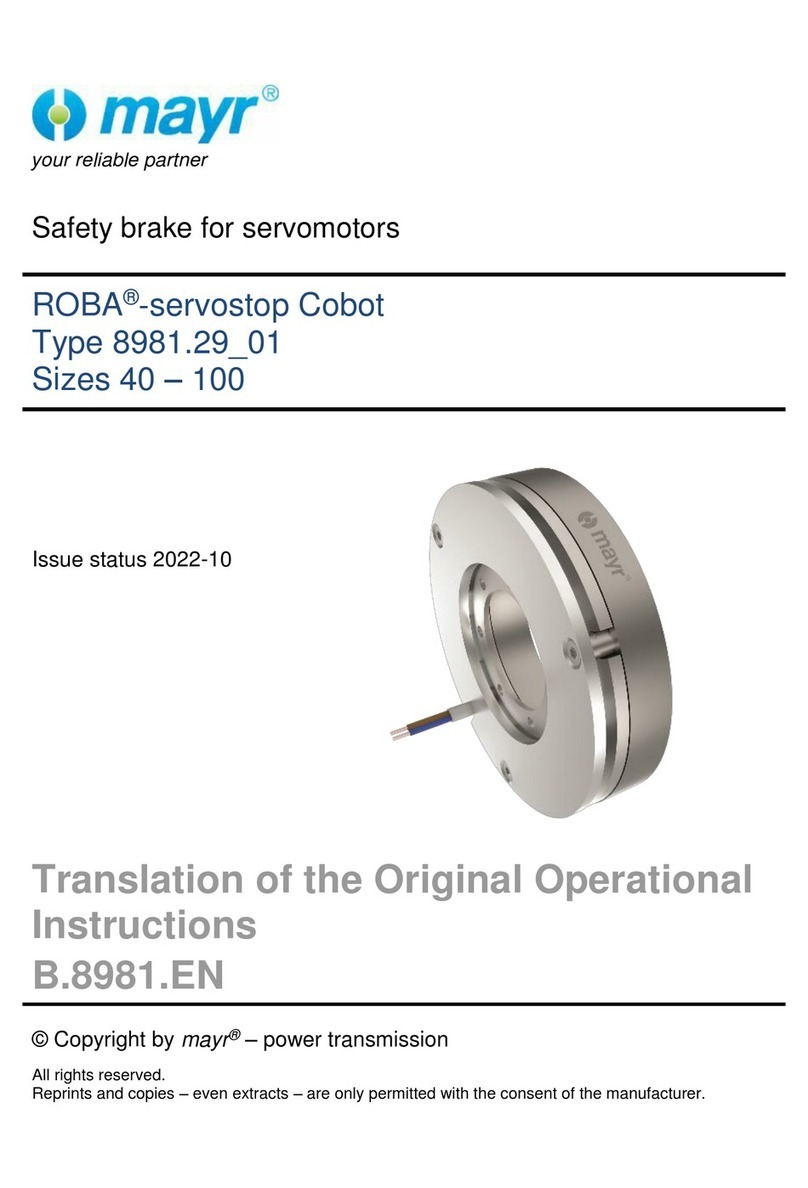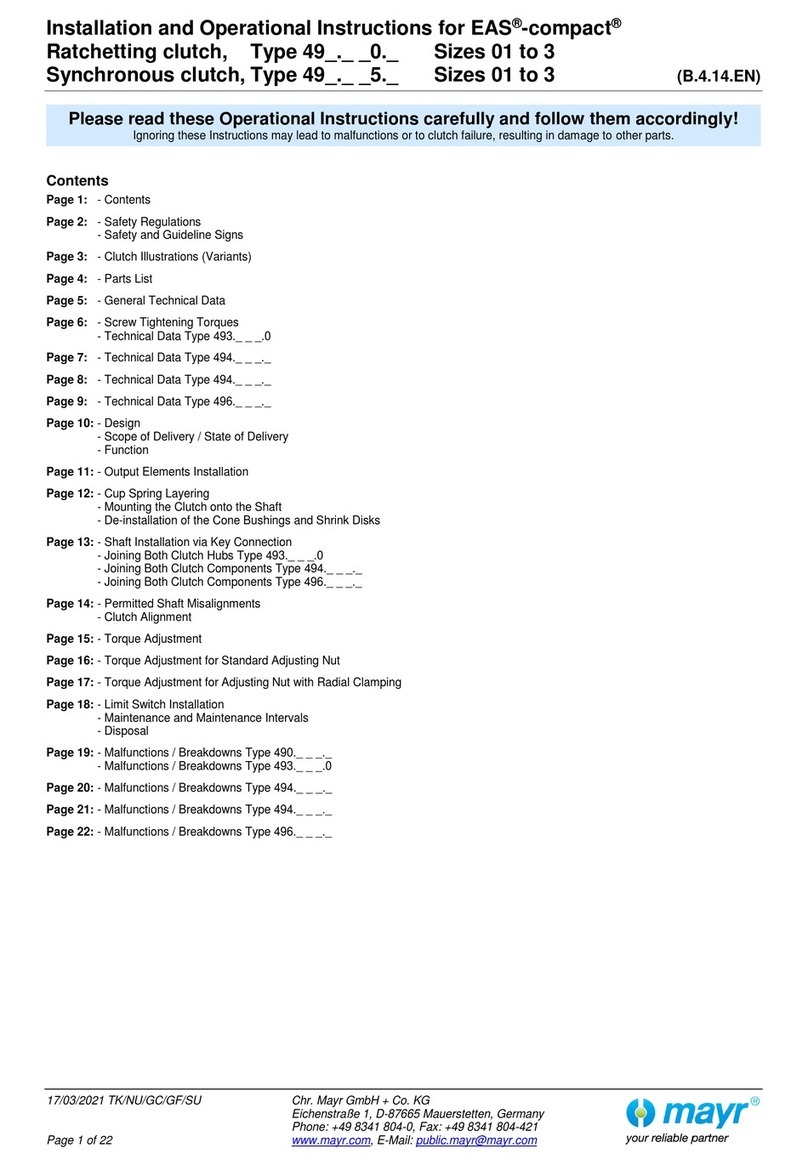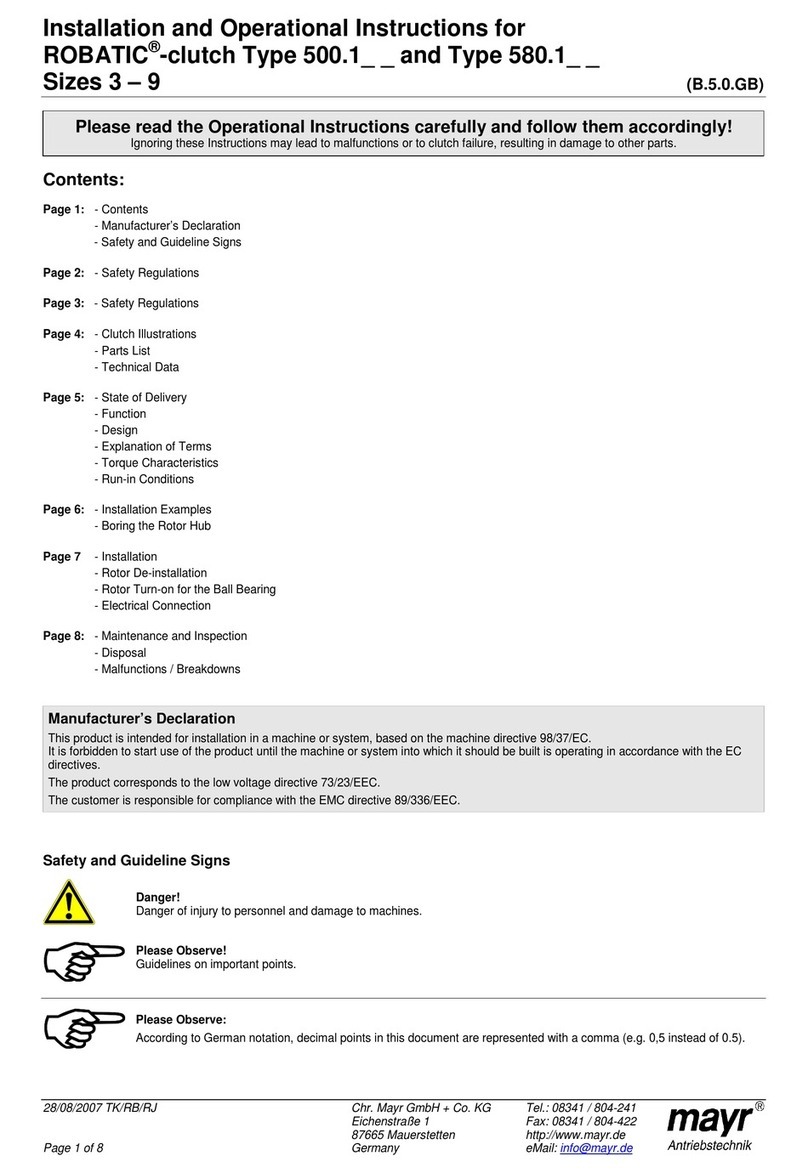
Installation and Operational Instructions for
ROBA-stop®-S brake Type 856. _ _ _ . _
Sizes 8, 9 and 10 (B.8.3.GB)
03/11/2010 TK/KE/GC/SU Chr. Mayr GmbH + Co. KG Tel.: 08341 / 804-0
Eichenstraße 1 Fax: 08341 / 804-421
D-87665 Mauerstetten http://www.mayr.de
Page 3 of 14 Germany E-Mail: info@mayr.de
Safety Regulations
These Safety Regulations are user hints only and may not be complete!
Ambient Temperature: – 20 °C up to + 40 °C
CAUTION At temperatures of around or under freezing
point, condensation can strongly reduce the
torque, or the friction surfaces can freeze up.
The user is responsible for taking appropriate
counter measures.
Appointed Use
mayr ®-brakes have been developed, manufactured and tested
in compliance with the DIN VDE 0580 standard and in
accordance with the EU Low Voltage Directive as
electromagnetic components. During installation, operation and
maintenance of the product, the requirements for the standard
must be observed.
mayr®-brakes are for use in machines and systems and must
only be used in the situations for which they are ordered and
confirmed. Using them for any other purpose is not allowed!
Earthing Connection
The brake is designed for Protection Class I. This protection
covers not only the basic insulation, but also the connection of all
conductive parts to the PE conductor on the fixed installation. If
the basic insulation fails, no contact voltage will remain. Please
carry out a standardized inspection of the PE conductor
connections to all contactable metal parts!
Insulation Material Class F (+155 °C)
The insulation components on the magnetic coils are
manufactured at least to insulation material class F (+155 °C).
Protection IP67
When installed, dust-proof and protected against contact as well
as against temporary submersion under water.
Brake Storage
Store the brakes in a horizontal position, in dry rooms and
dust and vibration-free.
Relative air humidity < 50 %.
Temperature without major fluctuations within a range
from – 20 °up to +60°C.
Do not store in direct sunlight or UV light.
Do not store aggressive, corrosive substances (solvents /
acids / lyes / salts etc.) near to the brakes.
For longer storage of more than 2 years, special measures are
required (please contact the manufacturer).
Handling
Before installation, the brake must be inspected and found to
be in proper condition.
The brake function must be inspected both once installation
has taken place as well as after longer system downtimes, in
order to prevent the drive starting up against possibly seized
linings.
User-implemented Protective Measures:
Please cover moving parts to protect against injury
through seizure.
Place a cover on the magnetic part to protect against injury
through dangerously high temperatures.
Protective circuit: When using DC-side switching, the coil
must be protected by a suitable protective circuit according
to VDE 0580, which is integrated in mayr ®-rectifiers. To
protect the switching contact from consumption when using
DC-side switching, additional protective measures are
necessary (e.g. series connection of switching contacts).
The switching contacts used should have a minimum
contact opening of 3 mm and should be suitable for
inductive load switching. Please make sure on selection that
the rated voltage and the rated operation current are
sufficient. Depending on the application, the switching
contact can also be protected by other protective circuits
(e.g. mayr ®-spark quenching unit, half-wave and bridge
rectifiers), although this may of course then alter the
switching times.
Install additional protective measures against corrosion if
the brake is subject to extreme ambient conditions or is
installed in open air conditions, unprotected from the
weather.
Take precautions against freeze-up of the friction
surfaces in high humidity and at low temperatures.
Regulations, Standards and Directives Used:
DIN VDE 0580 Electromagnetic devices and
components, general directives
2006/95/EC Low voltage directive
CSA C22.2 No. 14-2010 Industrial Control Equipment
UL 508 (Edition 17) Industrial Control Equipment
Please Observe the Following Standards:
DIN EN ISO 12100-1 and 2 Machine safety
DIN EN ISO 14121-1 Risk assessment
DIN EN 61000-6-4 Noise emission
DIN EN 61000-6-2 Interference immunity
EN 60204 Electrical machine equipment
